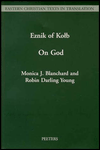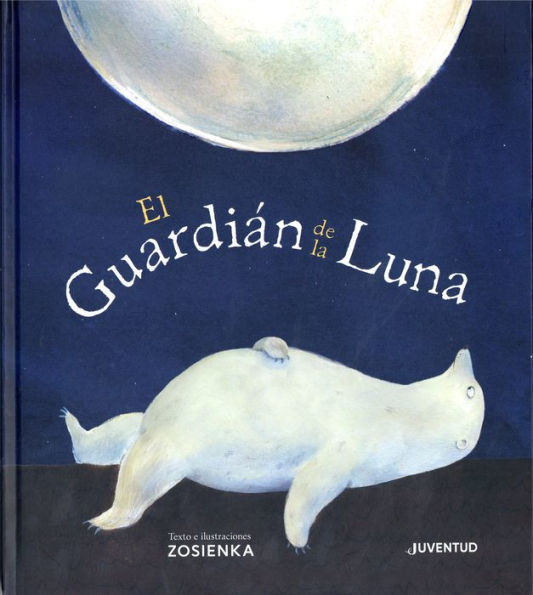Home
Guardians of Idolatry: Gods, Demons, and Priests Hernando Ruiz de Alarcon's Treatise on the Heathen Superstitions
Barnes and Noble
Loading Inventory...
Guardians of Idolatry: Gods, Demons, and Priests Hernando Ruiz de Alarcon's Treatise on the Heathen Superstitions
Current price: $45.00
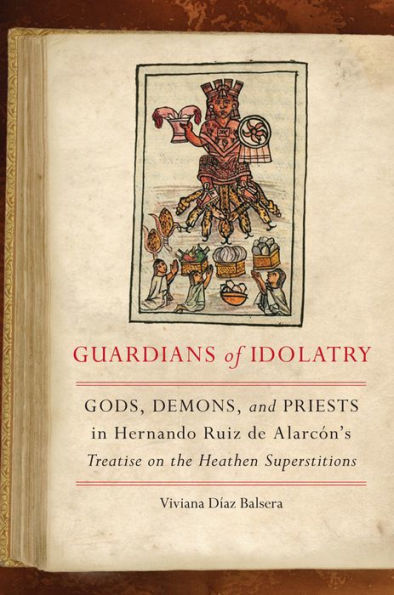
Barnes and Noble
Guardians of Idolatry: Gods, Demons, and Priests Hernando Ruiz de Alarcon's Treatise on the Heathen Superstitions
Current price: $45.00
Loading Inventory...
Size: Hardcover
*Product information may vary - to confirm product availability, pricing, shipping and return information please contact Barnes and Noble
In 1629, Catholic priest Hernando Ruiz de Alarcón produced the
Treatise on the Heathen Superstitions That Today Live among the Indians Native to This New Spain
to aid the church in its abolishment of native Nahua religious practices. The bilingual Nahuatl-Spanish
Treatise
collected diverse incantations, or
nahualtocaitl
, used to conjure Mesoamerican deities for daily sustenance and medical activities. Today this work is recognized as one of the most significant firsthand records of indigenous religious practices in postconquest Mexico. Yet, as Viviana Díaz Balsera argues in
Guardians of Idolatry
, the selection process for the incantations recorded in the
reflects two sites of agency: Ruiz de Alarcón’s desire to present the most flagrant examples of Nahua “demonic” practices, and Nahua efforts to share benign nahualtocaitl in order to preserve their preconquest traditions while negotiating with colonial Christian hegemony.
offers readers a rare, in-depth look at the nahualtocaitl and the native cosmogonies, beliefs, and medical practices they reveal. Through close reading of four incantations—for safe travel, maguey sap harvesting, bow-and-arrow deer hunting, and divination through maize kernels—Díaz Balsera shows the nuances of a Nahua spiritual world populated by intelligent superhuman and nonhuman entities that directly responded to human appeals for intercession. She also addresses Jacinto de la Serna’s
Manual for Ministers of These Indians
(1656), an elaborate commentary on the
.
tells a compelling story of the robust presence of a unique form of Postclassic Mesoamerican ritual knowledge, fully operative one hundred years after the incursion of Christianity in south Central Mexico. Together, Ruiz de Alarcón’s
and de la Serna’s
Manual
reveal the highly sophisticated language of the nahualtocaitl, and the disparate ways in which both colonizers and resilient indigenous agents contributed to the conservation of Mesoamerican epistemology.
Treatise on the Heathen Superstitions That Today Live among the Indians Native to This New Spain
to aid the church in its abolishment of native Nahua religious practices. The bilingual Nahuatl-Spanish
Treatise
collected diverse incantations, or
nahualtocaitl
, used to conjure Mesoamerican deities for daily sustenance and medical activities. Today this work is recognized as one of the most significant firsthand records of indigenous religious practices in postconquest Mexico. Yet, as Viviana Díaz Balsera argues in
Guardians of Idolatry
, the selection process for the incantations recorded in the
reflects two sites of agency: Ruiz de Alarcón’s desire to present the most flagrant examples of Nahua “demonic” practices, and Nahua efforts to share benign nahualtocaitl in order to preserve their preconquest traditions while negotiating with colonial Christian hegemony.
offers readers a rare, in-depth look at the nahualtocaitl and the native cosmogonies, beliefs, and medical practices they reveal. Through close reading of four incantations—for safe travel, maguey sap harvesting, bow-and-arrow deer hunting, and divination through maize kernels—Díaz Balsera shows the nuances of a Nahua spiritual world populated by intelligent superhuman and nonhuman entities that directly responded to human appeals for intercession. She also addresses Jacinto de la Serna’s
Manual for Ministers of These Indians
(1656), an elaborate commentary on the
.
tells a compelling story of the robust presence of a unique form of Postclassic Mesoamerican ritual knowledge, fully operative one hundred years after the incursion of Christianity in south Central Mexico. Together, Ruiz de Alarcón’s
and de la Serna’s
Manual
reveal the highly sophisticated language of the nahualtocaitl, and the disparate ways in which both colonizers and resilient indigenous agents contributed to the conservation of Mesoamerican epistemology.
In 1629, Catholic priest Hernando Ruiz de Alarcón produced the
Treatise on the Heathen Superstitions That Today Live among the Indians Native to This New Spain
to aid the church in its abolishment of native Nahua religious practices. The bilingual Nahuatl-Spanish
Treatise
collected diverse incantations, or
nahualtocaitl
, used to conjure Mesoamerican deities for daily sustenance and medical activities. Today this work is recognized as one of the most significant firsthand records of indigenous religious practices in postconquest Mexico. Yet, as Viviana Díaz Balsera argues in
Guardians of Idolatry
, the selection process for the incantations recorded in the
reflects two sites of agency: Ruiz de Alarcón’s desire to present the most flagrant examples of Nahua “demonic” practices, and Nahua efforts to share benign nahualtocaitl in order to preserve their preconquest traditions while negotiating with colonial Christian hegemony.
offers readers a rare, in-depth look at the nahualtocaitl and the native cosmogonies, beliefs, and medical practices they reveal. Through close reading of four incantations—for safe travel, maguey sap harvesting, bow-and-arrow deer hunting, and divination through maize kernels—Díaz Balsera shows the nuances of a Nahua spiritual world populated by intelligent superhuman and nonhuman entities that directly responded to human appeals for intercession. She also addresses Jacinto de la Serna’s
Manual for Ministers of These Indians
(1656), an elaborate commentary on the
.
tells a compelling story of the robust presence of a unique form of Postclassic Mesoamerican ritual knowledge, fully operative one hundred years after the incursion of Christianity in south Central Mexico. Together, Ruiz de Alarcón’s
and de la Serna’s
Manual
reveal the highly sophisticated language of the nahualtocaitl, and the disparate ways in which both colonizers and resilient indigenous agents contributed to the conservation of Mesoamerican epistemology.
Treatise on the Heathen Superstitions That Today Live among the Indians Native to This New Spain
to aid the church in its abolishment of native Nahua religious practices. The bilingual Nahuatl-Spanish
Treatise
collected diverse incantations, or
nahualtocaitl
, used to conjure Mesoamerican deities for daily sustenance and medical activities. Today this work is recognized as one of the most significant firsthand records of indigenous religious practices in postconquest Mexico. Yet, as Viviana Díaz Balsera argues in
Guardians of Idolatry
, the selection process for the incantations recorded in the
reflects two sites of agency: Ruiz de Alarcón’s desire to present the most flagrant examples of Nahua “demonic” practices, and Nahua efforts to share benign nahualtocaitl in order to preserve their preconquest traditions while negotiating with colonial Christian hegemony.
offers readers a rare, in-depth look at the nahualtocaitl and the native cosmogonies, beliefs, and medical practices they reveal. Through close reading of four incantations—for safe travel, maguey sap harvesting, bow-and-arrow deer hunting, and divination through maize kernels—Díaz Balsera shows the nuances of a Nahua spiritual world populated by intelligent superhuman and nonhuman entities that directly responded to human appeals for intercession. She also addresses Jacinto de la Serna’s
Manual for Ministers of These Indians
(1656), an elaborate commentary on the
.
tells a compelling story of the robust presence of a unique form of Postclassic Mesoamerican ritual knowledge, fully operative one hundred years after the incursion of Christianity in south Central Mexico. Together, Ruiz de Alarcón’s
and de la Serna’s
Manual
reveal the highly sophisticated language of the nahualtocaitl, and the disparate ways in which both colonizers and resilient indigenous agents contributed to the conservation of Mesoamerican epistemology.
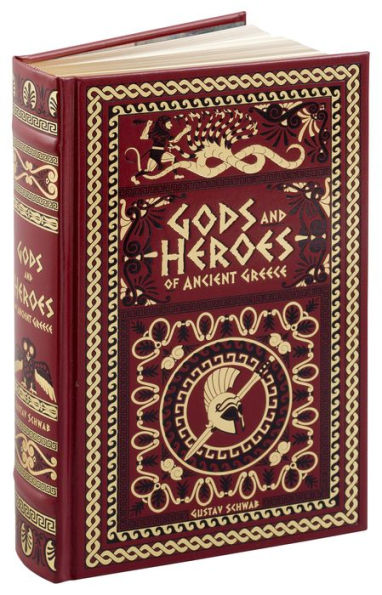


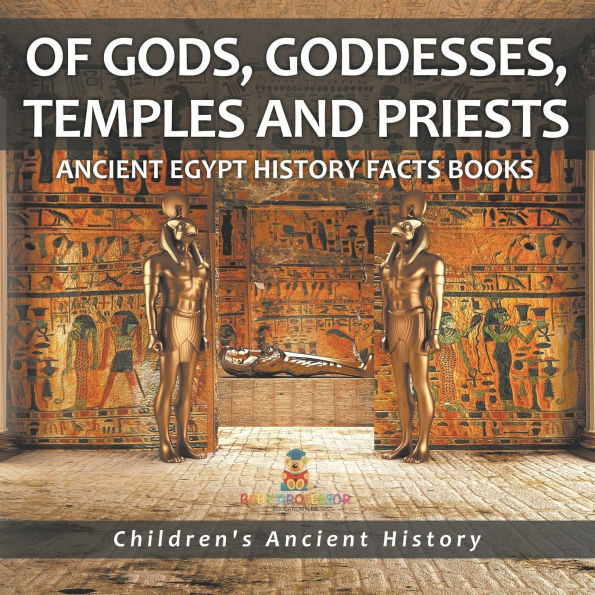
![Guardians Of The Galaxy: Awesome Mix, Vol. 3 [Rocket Cassette] [Barnes & Noble Exclusive]](https://prodimage.images-bn.com/pimages/0050087532727_p0_v1_s600x595.jpg)



